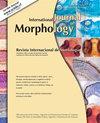黄芪汤对辐射诱导的旁观者效应的保护作用及其机制
IF 0.5
4区 医学
Q4 ANATOMY & MORPHOLOGY
引用次数: 0
摘要
12C6+重离子束辐照可引起旁观者效应。炎症因子、内分泌激素和凋亡蛋白可能参与12C6+照射诱导的旁观者效应。本研究探讨了黄芪汤对12C6+辐射诱导的旁观者效应的保护作用及其机制。Wistar大鼠随机分为对照组、12C6+重离子辐照模型和HQD高/中/低剂量组。HE染色观察脑、肾的病理变化。检测外周血化学指标、炎症因子及内分泌激素。TUNEL法检测细胞凋亡。采用实时荧光定量PCR和Western blot检测增殖细胞核抗原(PCNA)的表达。辐照对脑组织和肾组织造成病理性损伤。照射后,白细胞(WBC)和单核细胞数量以及白细胞介素(IL)-2、促肾上腺皮质激素释放激素(CRH)和PCNA的表达均下降。损伤伴IL-1β、IL-6、皮质酮(CORT)、促肾上腺皮质激素(ACTH)表达增加,神经元凋亡增加。这些影响表明辐射引起的旁观者效应。HQD可减轻脑、肾组织的病理损伤,提高WBC、中性粒细胞、淋巴细胞和单核细胞的数量以及IL-2、CRH和PCNA的表达。同时降低IL-1β、IL-6、CORT、ACTH的表达及神经元凋亡。HQD对12C6+辐射诱导的旁观者效应具有保护作用。其潜在机制可能涉及促进外周血细胞的产生,抑制炎症因子和细胞凋亡,调节内分泌激素。本文章由计算机程序翻译,如有差异,请以英文原文为准。
Protective Effects and Mechanisms of Huangqi Decoction Against Radiation-Induced Bystander Effects
The 12C6+ heavy ion beam irradiation can cause bystander effects. The inflammatory cytokines, endocrine hormones and apoptotic proteins may be involved in 12C6+ irradiation-induced bystander effects. This study characterized the protective effects and mechanisms of Huangqi decoction (HQD) against 12C6+ radiation induced bystander effects. Wistar rats were randomly divided into control, 12C6+ heavy ion irradiation model, and high-dose/medium-dose/low-dose HQD groups. HE staining assessed the pathological changes of brain and kidney. Peripheral blood chemical indicators as well as inflammatory factors and endocrine hormones were detected. Apoptosis was measured with TUNEL. Proliferating cell nuclear antigen (PCNA) expression was determined with real-time PCR and Western blot.Irradiation induced pathological damage to the brain and kidney tissues. After irradiation, the numbers of white blood cells (WBC) and monocyte, and the expression of interleukin (IL)-2, corticotropin-releasing hormone (CRH) and PCNA decreased. The damage was accompanied by increased expression of IL-1β, IL-6, corticosterone (CORT) and adrenocorticotropic hormone (ACTH) as well as increased neuronal apoptosis. These effects were indicative of radiation-induced bystander effects. Administration of HQD attenuated the pathological damage to brain and kidney tissues, and increased the numbers of WBC, neutrophils, lymphocyte and monocytes, as well as the expression of IL-2, CRH and PCNA. It also decreased the expression of IL-1β, IL-6, CORT and ACTH as well as neuronal apoptosis. HQD exhibits protective effects against 12C6+ radiation-induced bystander effects. The underlying mechanism may involve the promotion of the production of peripheral blood cells, inhibition of inflammatory factors and apoptosis, and regulation of endocrine hormones.
求助全文
通过发布文献求助,成功后即可免费获取论文全文。
去求助
来源期刊

International Journal of Morphology
ANATOMY & MORPHOLOGY-
CiteScore
0.90
自引率
20.00%
发文量
110
审稿时长
3-8 weeks
期刊介绍:
The International Journal of Morphology (Revista Internacional de Morfología) (Print ISSN 0717-9367; Online ISSN 0717-9502) is an official publication of the Chilean Society of Anatomy, Argentine Association of Anatomy and Panamerican Association of Anatomy. It is the continuation of Revista Chilena de Anatomía (Chilean Anatomical Journal) and is published bimonthly. The six issues published yearly constitute one volume. This journal covers morphology in all its aspects, Gross Anatomy, Histology and Developmental Biology, as well as human and animals morphological aspects, including Celular, Molecular, systems or Evolutionary Biology. Reviews, short and brief communications and Letters to the Editor are also accepted.
 求助内容:
求助内容: 应助结果提醒方式:
应助结果提醒方式:


